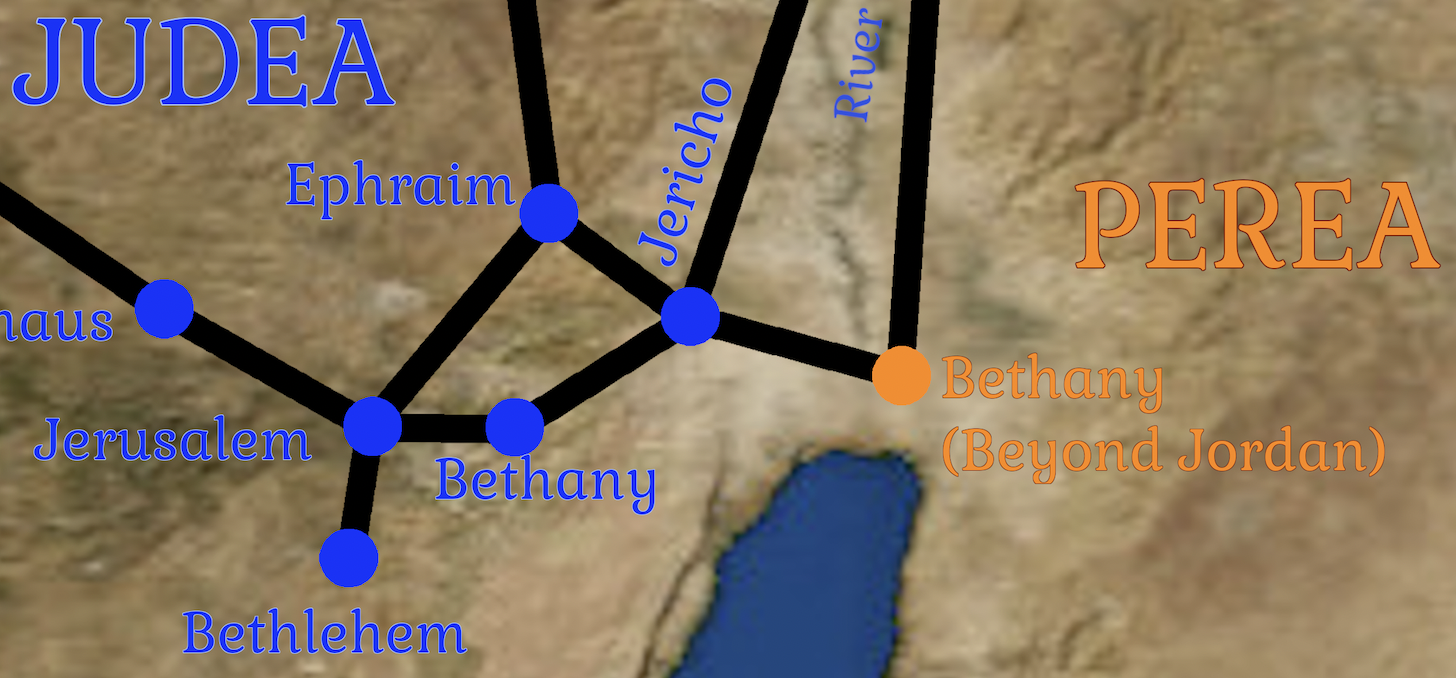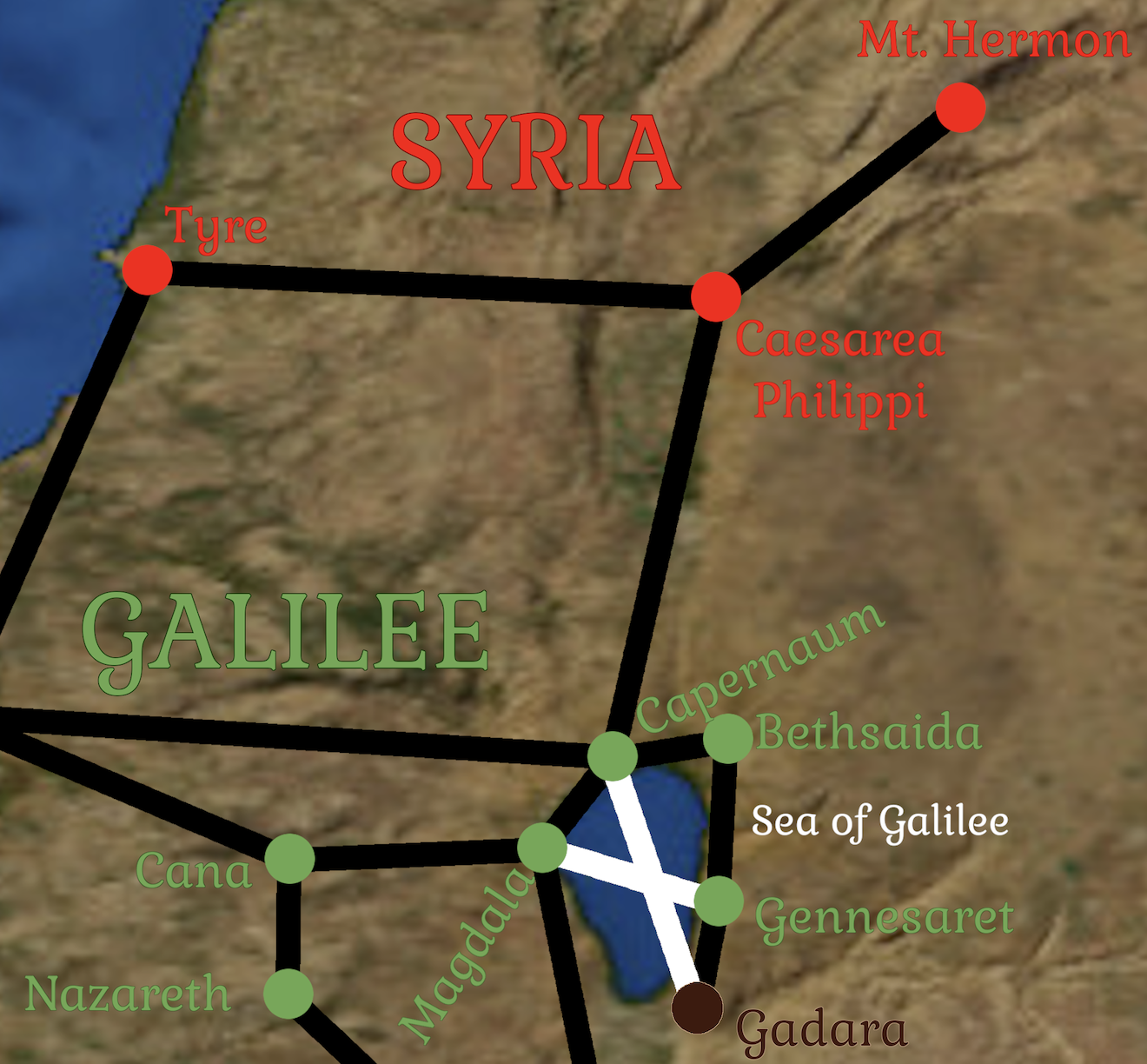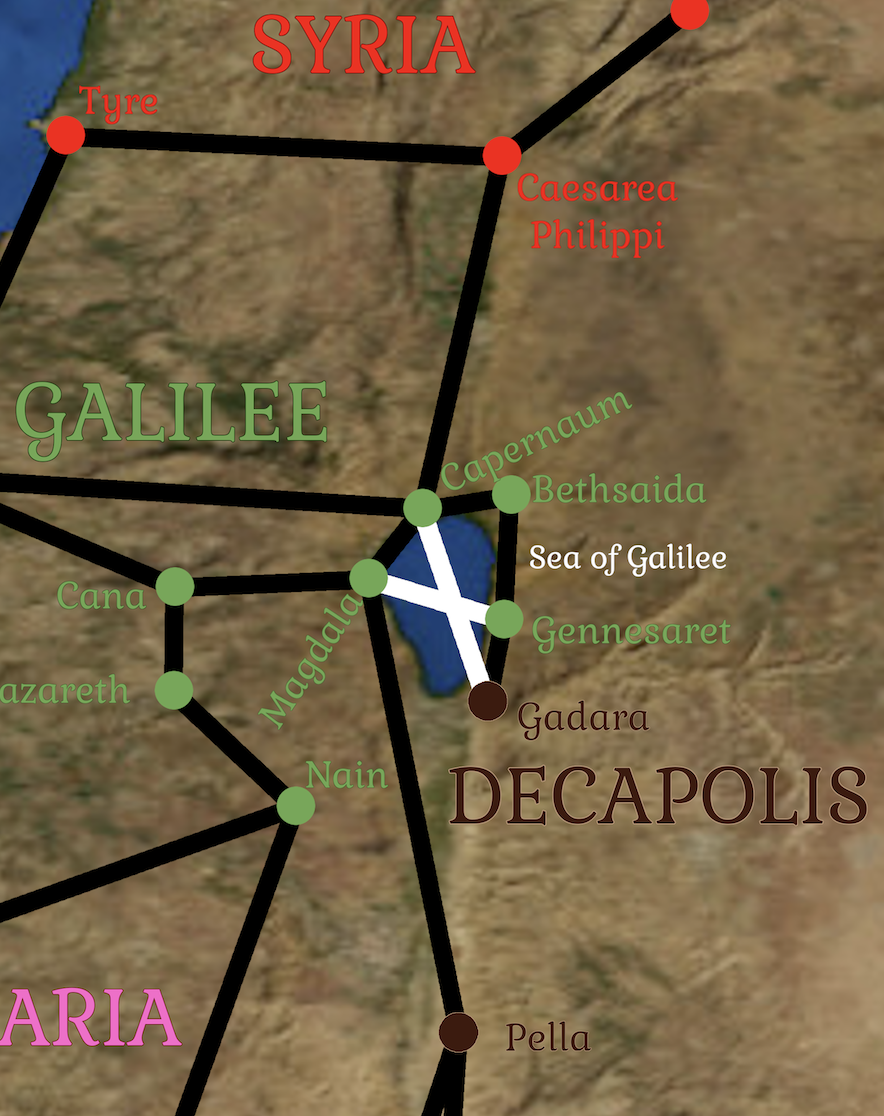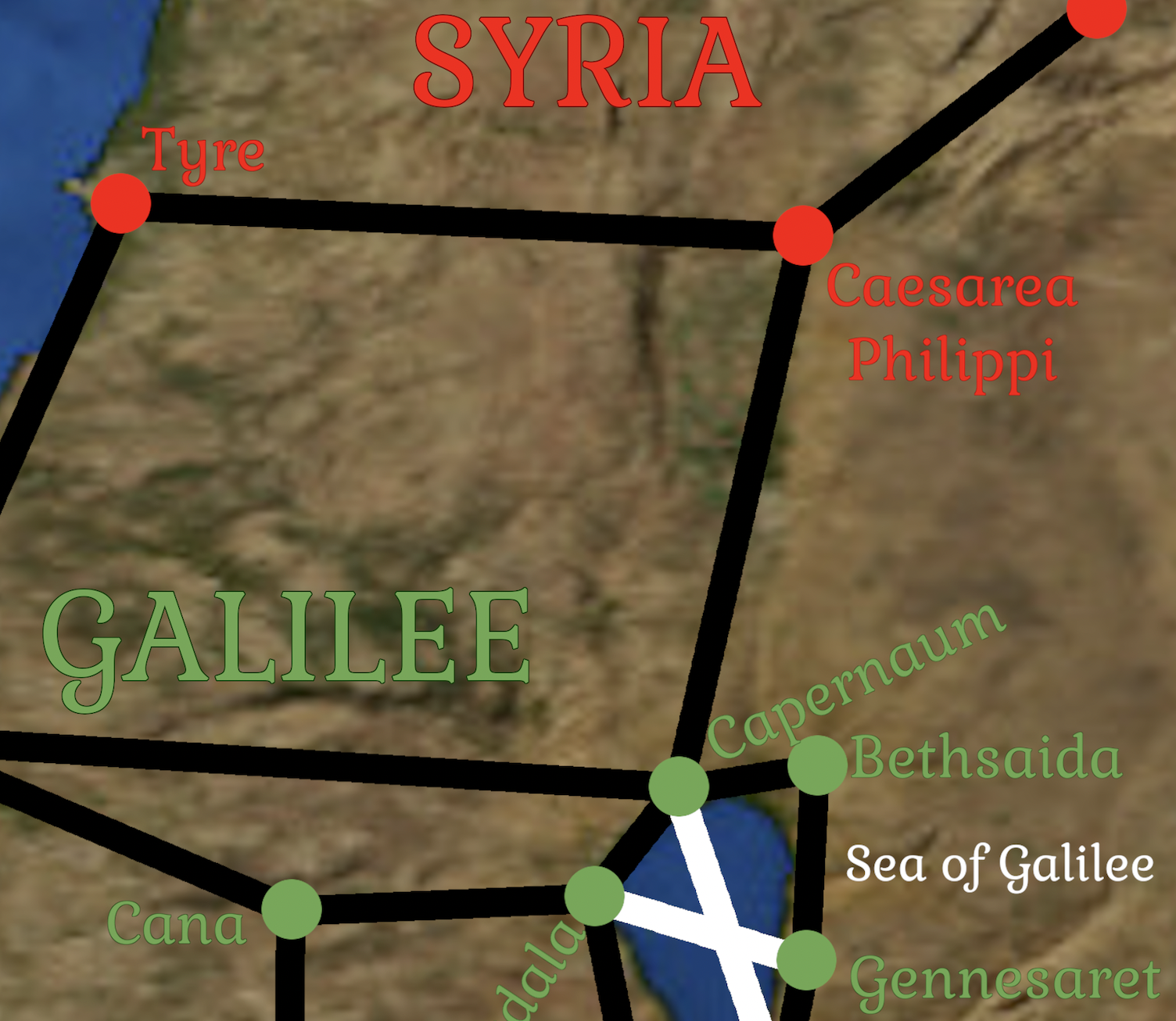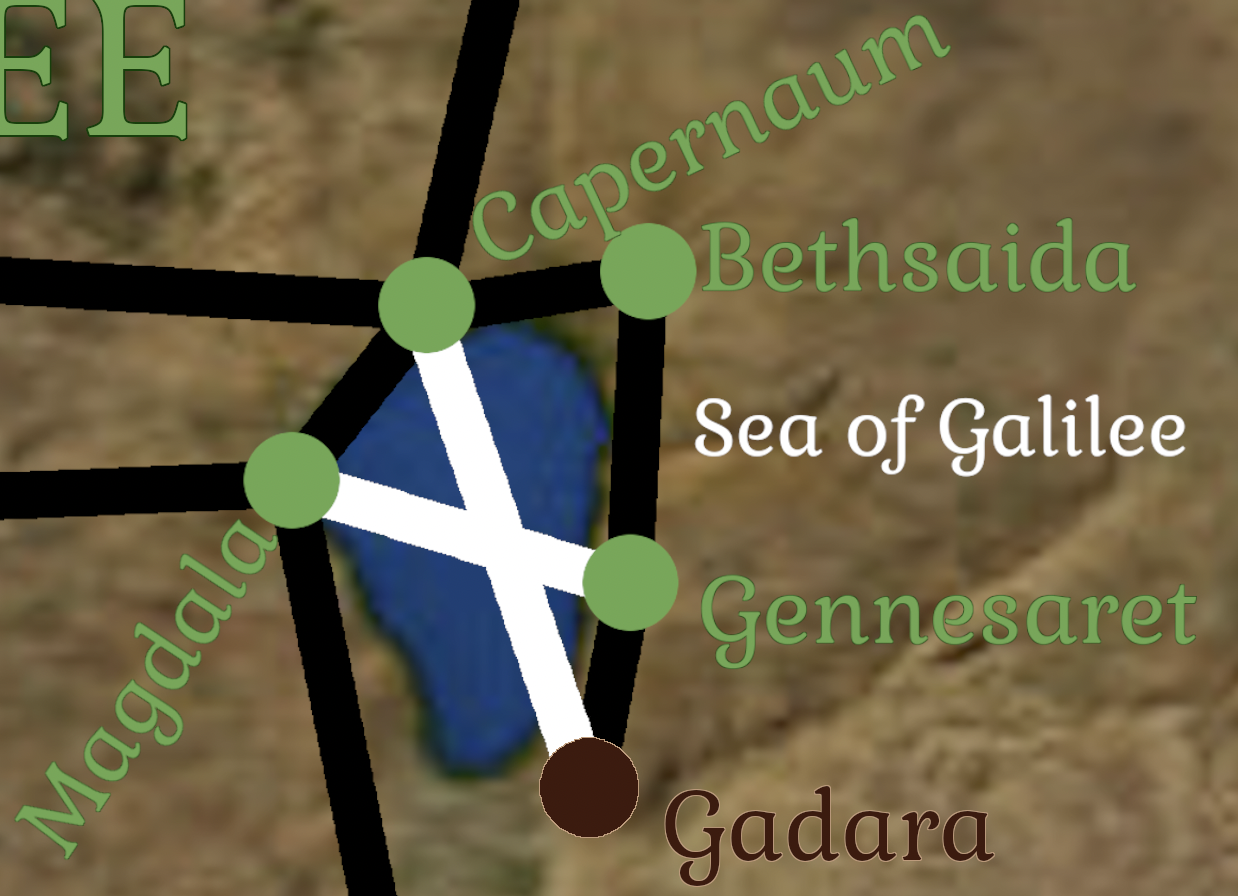I’ve been silent the past few weeks, in part because I’ve been wrestling with what comes next.
In my last post, I had quoted from Luke 9:51: “It came to pass, when the days were near that he should be taken up, he intently set his face to go to Jerusalem.” And so, obviously, the rest of my posts will be on that final journey from Galilee to Jerusalem where Jesus would lay down His life for His people.
But what route did He take? How did He get there?
The four gospel accounts tell of that journey in different ways, emphasizing different aspects of His ministry along the way. These chapters are rich in teaching, as Christ’s ministry reaches its greatest impact. In this series of articles, I am focused on the geographic travels of our Savior, but that is NOT the focus of these chapters in the gospels. Please take the time as we travel through these passages to read the actual scriptures and learn more about our Lord and His love for His people.
With that said, let’s examine the route to Jerusalem as described by each of the four gospel authors:
Matthew and Mark
These two gospels record almost the exact same route:
- To Judea beyond the Jordan (Matthew 19:1, Mark 10:1)
- To Jericho (Matthew 20:29, Mark 10:46)
- To Bethphage and Bethany (Matthew 21:1, Mark 11:1)
- To Jerusalem (Matthew 21:10, Mark 11:11)
- To Bethany (Matthew 21:17, Mark 11:11)
- To Jerusalem (Matthew 21:18, Mark 11:15)
- To the Mount of Olives (Matthew 24:3, Mark 13:3)
- To Bethany (Matthew 26:6, Mark 14:3)
- To “the city” (Matthew 26:18, Mark 14:16)
- To the Mount of Olives (Mark 14:26)
- Back to Jerusalem (Mark 14:53)
Luke
Luke’s account is very similar to Matthew and Mark, but with a few minor differences:
- Through Samaria and Galilee (Luke 17:11)
- To Jericho (Luke 18:35)
- To Bethphage and Bethany (Luke 19:29)
- To “the city” (Luke 19:41)
- To the Mount of Olives (Luke 22:39)
- Back to Jerusalem (Luke 22:54)
John
John’s emphasis is very different than the other three:
- To “beyond the Jordan into the place where John was baptizing at first” (Bethany Beyond the Jordan) (John 10:40)
- To Bethany (John 11:17)
- To Ephraim (John 11:54)
- To Bethany (John 12:1)
- To Jerusalem (John 12:12)
Combined View
My best effort to synchronize these together leads me to this chronology of Jesus’ journey from Galilee to Jerusalem:
- Through Samaria and Galilee (Luke 17:11)
- To Bethany Beyond Jordan (Matthew 19:1, Mark 10:1, John 10:40)
- To Bethany (John 11:17)
- To Jericho (Matthew 20:29, Mark 10:46, Luke 18:35)
- To Ephraim (John 11:54)
- To Bethphage and Bethany (Matthew 21:1, Mark 11:1, Luke 19:29, John 12:1)
- To Jerusalem (Matthew 21:10, Mark 11:11, Luke 19:41, John 12:12)
- To Bethany (Matthew 21:17, Mark 11:11)
- To Jerusalem (Matthew 21:18, Mark 11:15)
- To the Mount of Olives (Matthew 24:3, Mark 13:3)
- To Bethany (Matthew 26:6, Mark 14:3)
- To Jerusalem (Matthew 26:18, Mark 14:16)
- To the Mount of Olives (Mark 14:26, Luke 22:39)
- Back to Jerusalem (Mark 14:53, Luke 22:54)
I will use this chronology in the coming weeks.
—
The map at the top of this post is a snapshot of a portion of the gameboard for Journeys with Jesus.
If you’ve found this interesting and would like to continue to read these stories of the journeys and places in Journeys with Jesus, sign up in the sidebar to receive updates.
Note: all scripture quotes, unless otherwise noted, are from the World English Bible which is in the public domain.

